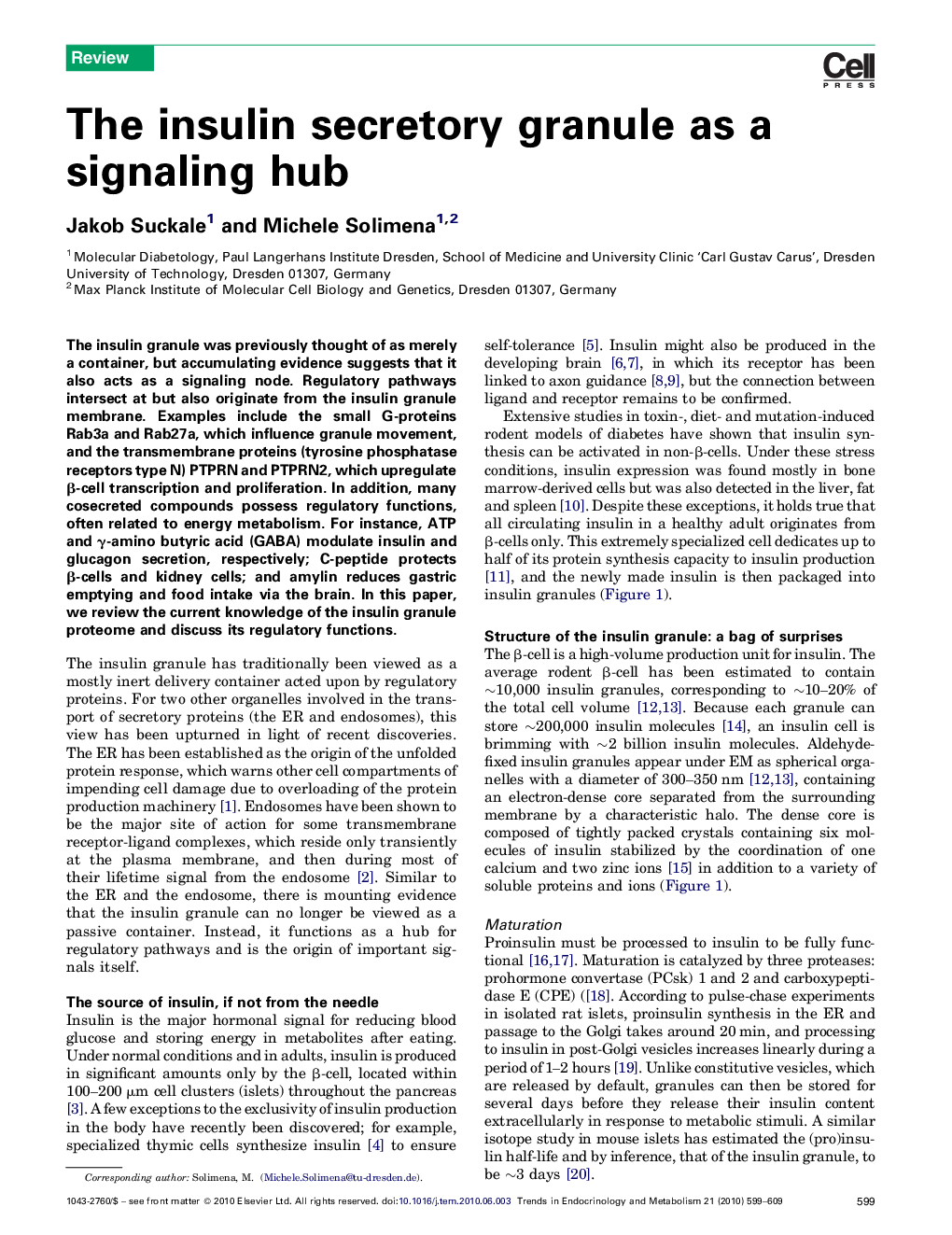| Article ID | Journal | Published Year | Pages | File Type |
|---|---|---|---|---|
| 2810709 | Trends in Endocrinology & Metabolism | 2010 | 11 Pages |
The insulin granule was previously thought of as merely a container, but accumulating evidence suggests that it also acts as a signaling node. Regulatory pathways intersect at but also originate from the insulin granule membrane. Examples include the small G-proteins Rab3a and Rab27a, which influence granule movement, and the transmembrane proteins (tyrosine phosphatase receptors type N) PTPRN and PTPRN2, which upregulate β-cell transcription and proliferation. In addition, many cosecreted compounds possess regulatory functions, often related to energy metabolism. For instance, ATP and γ-amino butyric acid (GABA) modulate insulin and glucagon secretion, respectively; C-peptide protects β-cells and kidney cells; and amylin reduces gastric emptying and food intake via the brain. In this paper, we review the current knowledge of the insulin granule proteome and discuss its regulatory functions.
